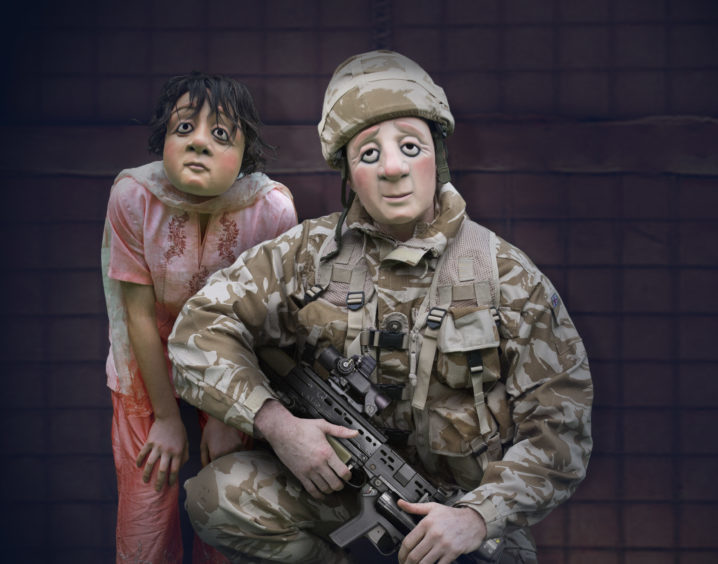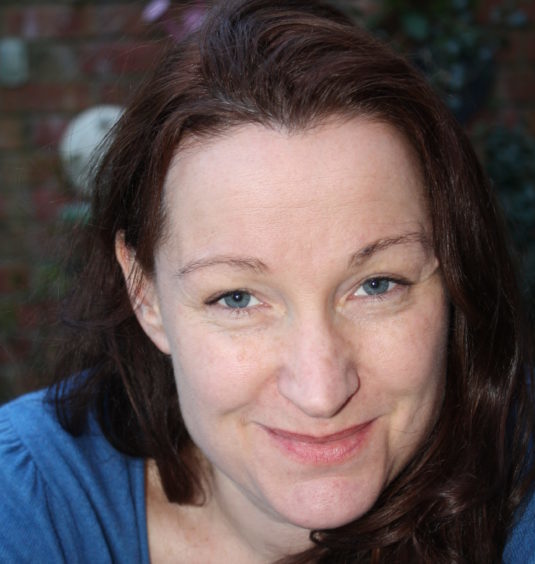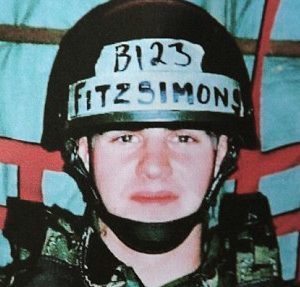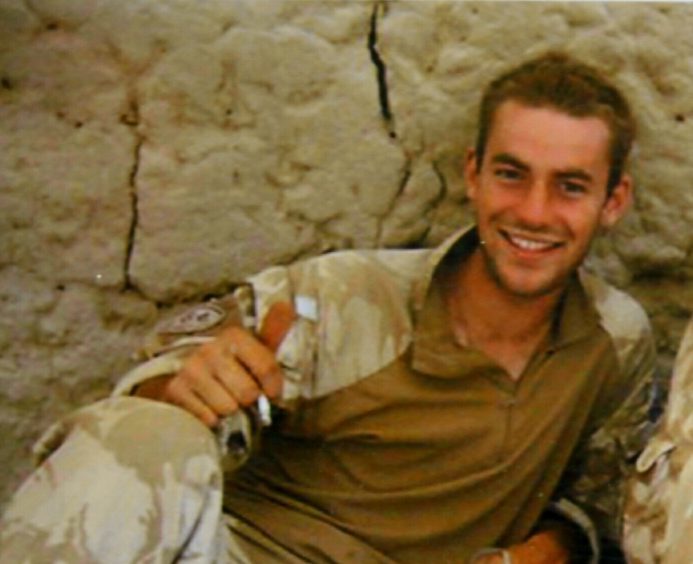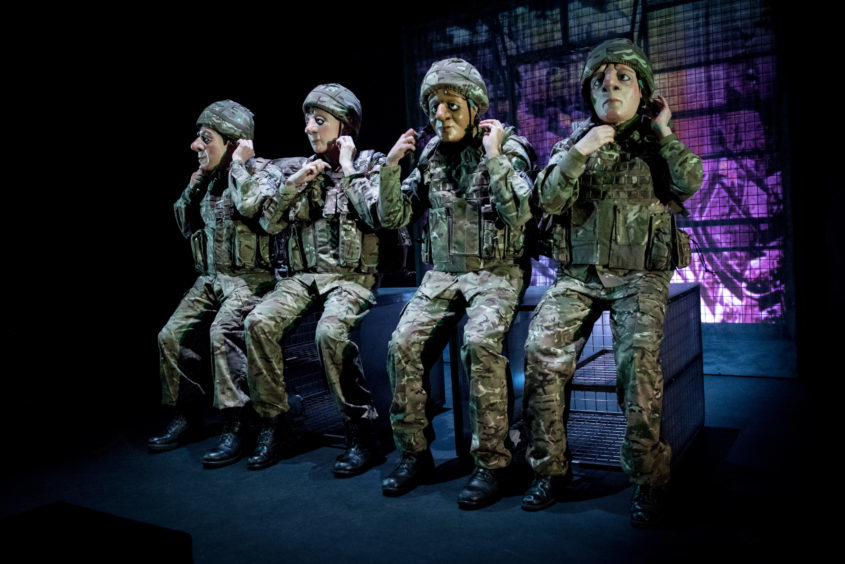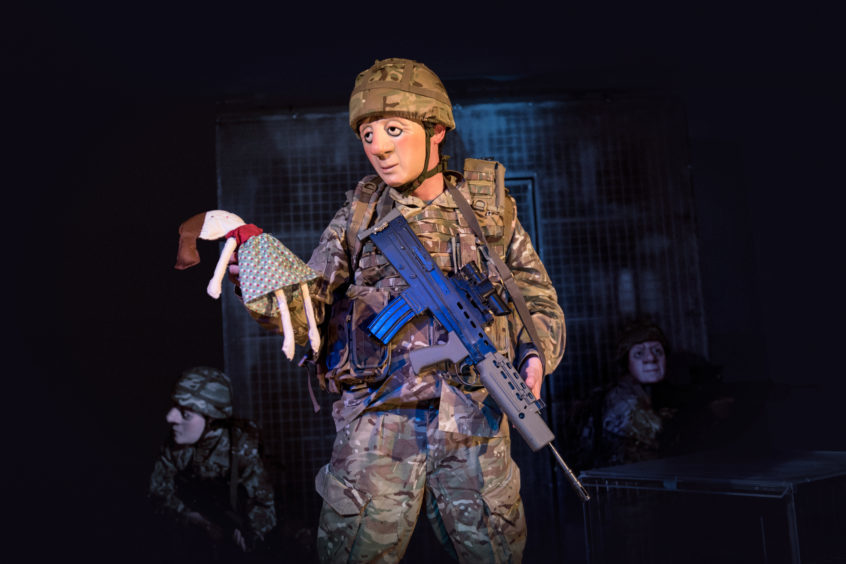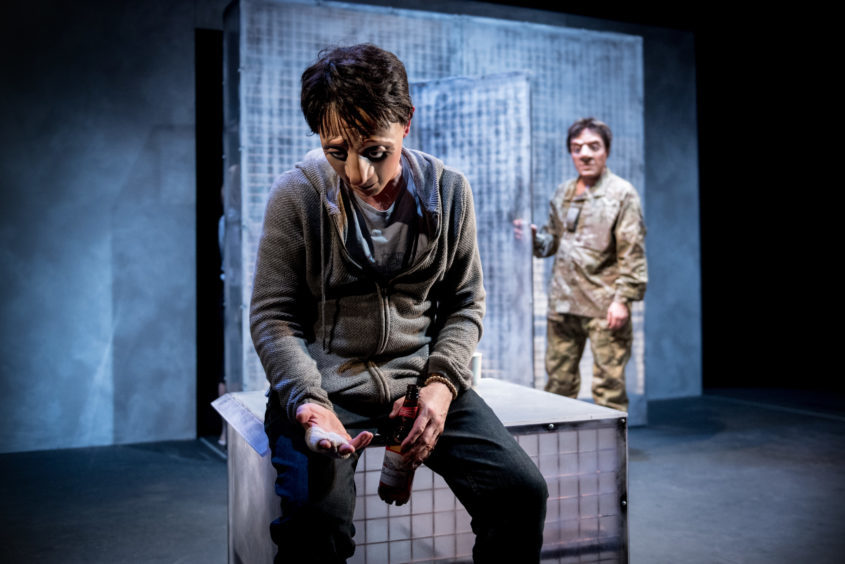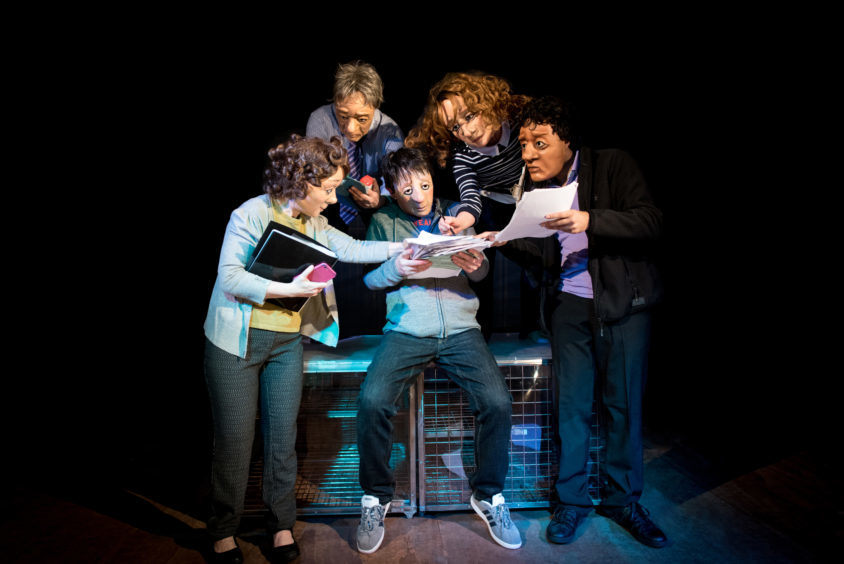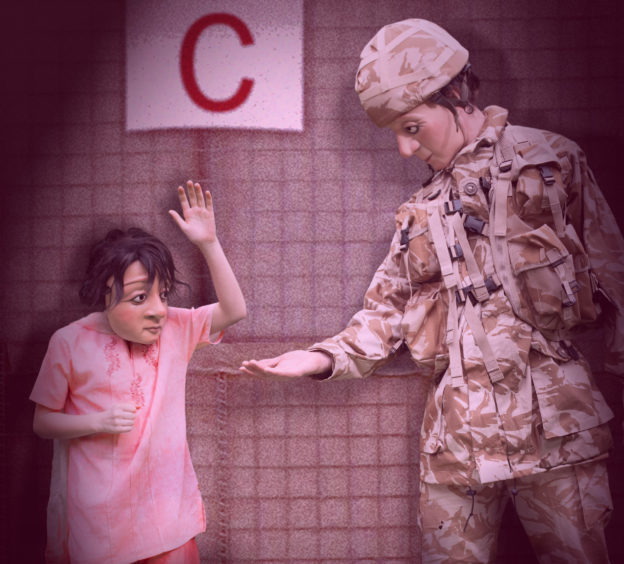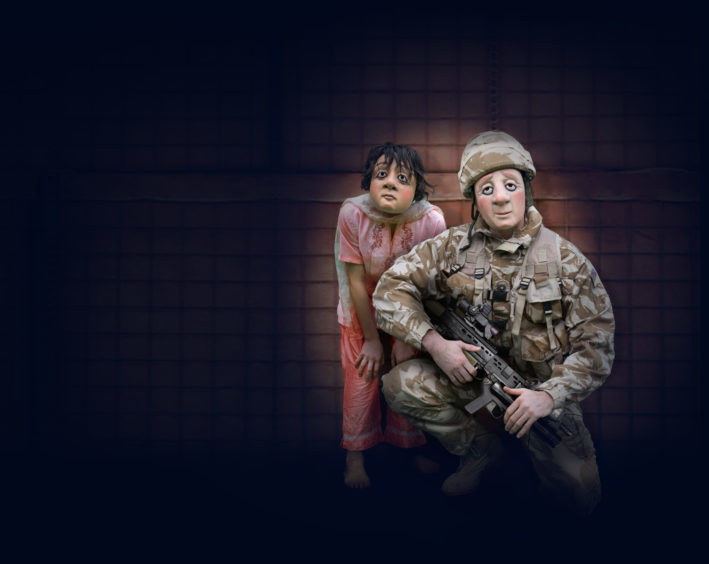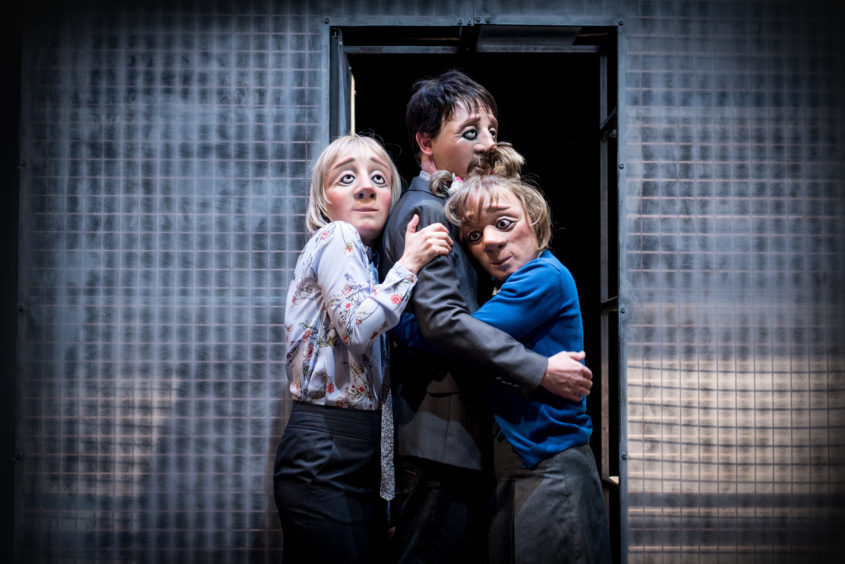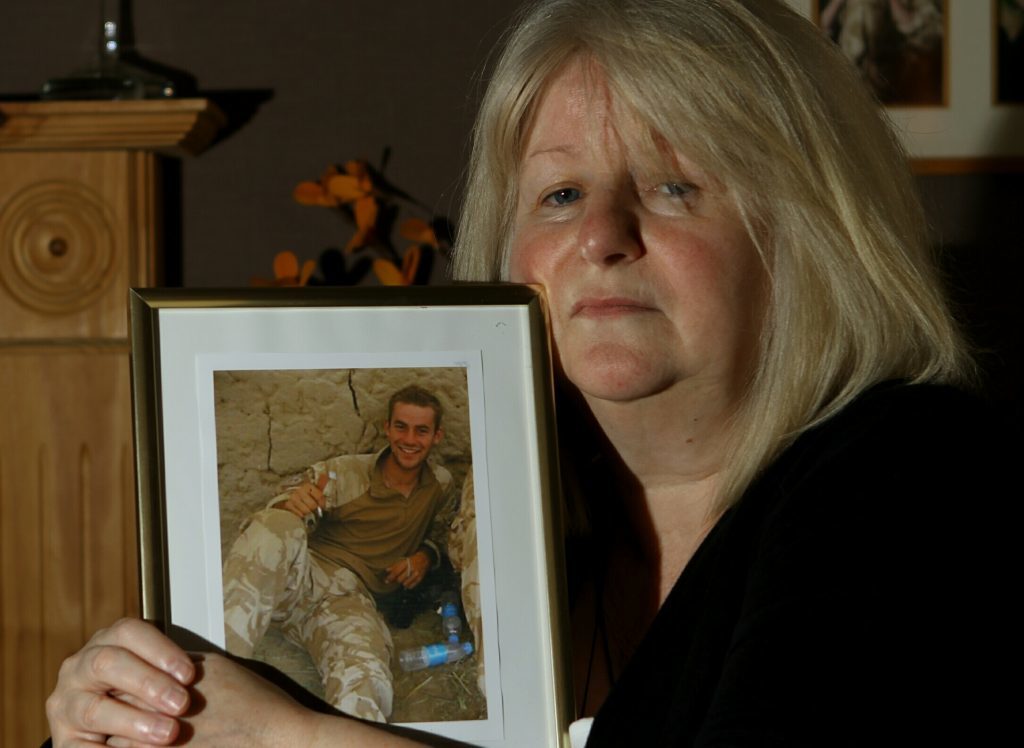As masked theatre company Vamos brings its show about PTSD to Dundee Rep, artistic director Rachael Savage tells Michael Alexander why it’s a story that “must” be told.
Over the last few decades Britain has sent thousands of people into combat.
But what happens when these soldiers come back home, having lost their friends and killed their enemies?
Royal Scottish Academy of Music and Drama trained Rachael Savage asked herself that very question a few years ago when she read an article about former soldier Danny Fitzsimons.
In May 2008, the decorated sniper was diagnosed with combat-related post-traumatic stress disorder (PTSD) by a court-appointed doctor.
Yet he still managed to secure a job with a private security firm in Iraq whilst on bail for assault.
He had been back in Iraq for just 36 hours when he shot dead two colleagues and was later convicted of two murders.
“His parents first knew there was a problem when they found him in a wheelie bin at 3 o’clock in the morning,” said Rachael.
“I originally started to ask questions – why did that man think he was safer in the wheelie bin? It also made me ask the question how on earth would that make a parent feel?”
Rachael’s research then moved to Matthew Green’s 2015 PTSD book Aftershock – particularly the story of Aaron Black, the Blairgowrie lad whose trauma, and ultimate suicide, was rooted in watching the death of his best mate.
Aaron, a 22-year-old Black Watch veteran who joined up at 17, committed suicide in December 2011 just seven months after leaving the army.
Shortly before Christmas that year, and haunted by memories of Afghanistan and the deaths of soldier friends, Aaron surrounded himself with treasured photographs, his army medals and a crucifix and sent a last ‘Goodbye’ text message to his mum June before taking his own life.
In the army his commander had praised him for his courage and well controlled aggression.
But in civilian life he started to lose that control.
Now Rachael, who is the artistic director of the Worcester-based Vamos Theatre company, is bringing the story of these – and other – soldiers who hide behind a ‘mask’ to Dundee Rep.
A Brave Face, which is a co-production with Mercury Theatre Colchester and a co-commission with London International Mime Festival, has been touring the UK since February to rave reviews from theatre goers and veterans alike.
What makes the show so powerful is that the actors all wear specially moulded masks and there is no verbal script.
Rachael, who was already “anti-war”, admits that when she was first approached by the Colchester Mercury Theatre to do a play about the military, her initial reaction was ‘why’?
However, having done her research, she now accepts this was a “very naïve and civvy response” and believes the whole of society needs to “wake up and be more aware” of PTSD.
“Ultimately this is the story of many,” said Rachael, who spent two years speaking to ex and serving soldiers, families and health professionals.
“It’s the story of Michael, of Ray, of Sue, of AJ – the list of names of soldiers, mothers, wives, partners is endless and I’ve been particularly lucky to be supported by Matthew Green and also by veterans.”
Rachael said the show aimed to get to the heart of the soldiers’ stories and the struggles of their loved ones – a hidden army of wives, partners, children and parents who are Britain’s “true conscripts”.
She owed particular thanks to a veteran called Ray Anderton who inspired the title A Brave Face and ensured there was a sense of realism throughout by advising on the script.
She explained: “I met Ray who early on said: ‘We all wear masks don’t we?’
“He then started saying ‘I wear a mask when I’m in denial, and then sometimes I wear a mask when I’m angry, or violent even, and that mask is not me and I don’t recognise that person’.”
Vamos was founded by Rachael in 2006, and, as a fully masked theatre company, means the actors wear beautifully moulded pieces of plastic on their face and don’t speak.
Working closely with mask maker Russell Dean of the Strangeface Theatre Company in Kent, Rachael describes it as a “highly visual form of theatre”.
However, the artistic director, who previously worked on a show about dementia, says it’s also naturalistic and it works incredibly well for such an intense subject as PTSD.
“The thing about the full masks is that you can feel it in the audience,” she said.
“For the first two or three minutes you can feel people in the audience thinking ‘oh my god what have I come to? I didn’t realise they weren’t going to speak. I’m not going to be able to understand it.’
“And then within two or three minutes they start laughing, and they start laughing because they understand. And the reason they understand is because we have masked actors who have scripts inside their heads.
“With that internal monologue as we call it, the audience engage so closely that they interpret every single movement, they are able to read the lines, and they hear the lines of the script in their head, and because they are looking to interpret, they meet us half way.
“Within that meeting the experience is intellectually and emotionally deeper.”
Rachael said some of the greatest plaudits so far have come from veterans themselves.
She added: “When veterans have come to see it they’ve been flabbergasted and said ‘how on earth can a civvy get inside my head’?
“The other day in Wales we had three veterans in the front row who were shouting out at points in the show and in the end were shaking hands with the actors as they took their bow.”
However, the company has also had to take precautions.
The potential sensitivity of the show, and number of potential veterans present, means that Vamos has produced a Trigger and Safety Sheet which pre-warns audience members about show content and themes, helping to minimise potential triggers for those living with PTSD.
“When I first made it I was thinking the reason I’m telling the story is to make civilians like me more aware,” she added.
“What I didn’t realise was the amount of military and ex-military that would be coming to see the show.
“The most powerful thing that masks can do is move people emotionally, deeply emotionally.
“If I can change people emotionally then I can change peoples’ opinion.
“But that’s also what needs to be talked about in the trigger sheet – those kind of warnings that this is an emotionally tough scene.”
Rachael says that for masked theatre to work it’s a combination of “75% just being a blooming good actor and 25% mask technique of how to connect with the audience.”
However, there’s also an underlying political message she hopes the audience will take away with them – and she also hopes audiences will gain a “greater respect” for veterans and the “hidden heroes” of military families who often go un-thanked and are left to pick up the pieces if and when things go wrong.
She added: “The British Army train people up – men and women – over six months and give them the most gruelling and thorough training.
“What they don’t do is give them any training to become a civilian again.
“That’s what I think is shameful and missing.
“I made a show that came to Scotland in the autumn of last year called Finding Joy which was about dementia. I found hope within that story because I found an incredible story and an incredibly inspirational family.
“I looked for hope in this story as well. But I haven’t quite found it yet. It was a really hard two years of research actually.”
June Black, whose son’s death inspired A Brave Face, will be at Dundee Rep on May 29 and is keen to continue raising awareness about PTSD. However, she admits she remains slightly apprehensive.
She said: “I’m told that character Ryan is based to a large extent on Aaron’s story in Matthew Green’s book Aftershock.
“It’s a composite character and the ending is different.
“I’ll be going – but I’m slightly nervous as I may ‘recognise’ Aaron and I know only too well how it ended for him. It maybe a bit too close to home for me. But I’m ready for it.”
*A Brave Face has three Scottish dates: – Eden Court, Inverness on May 28; Dundee Rep Theatre on May 29 and Eastwood Park Theatre and Gallery Giffnock on May 30. For ticket information go to www.vamostheatre.co.uk
